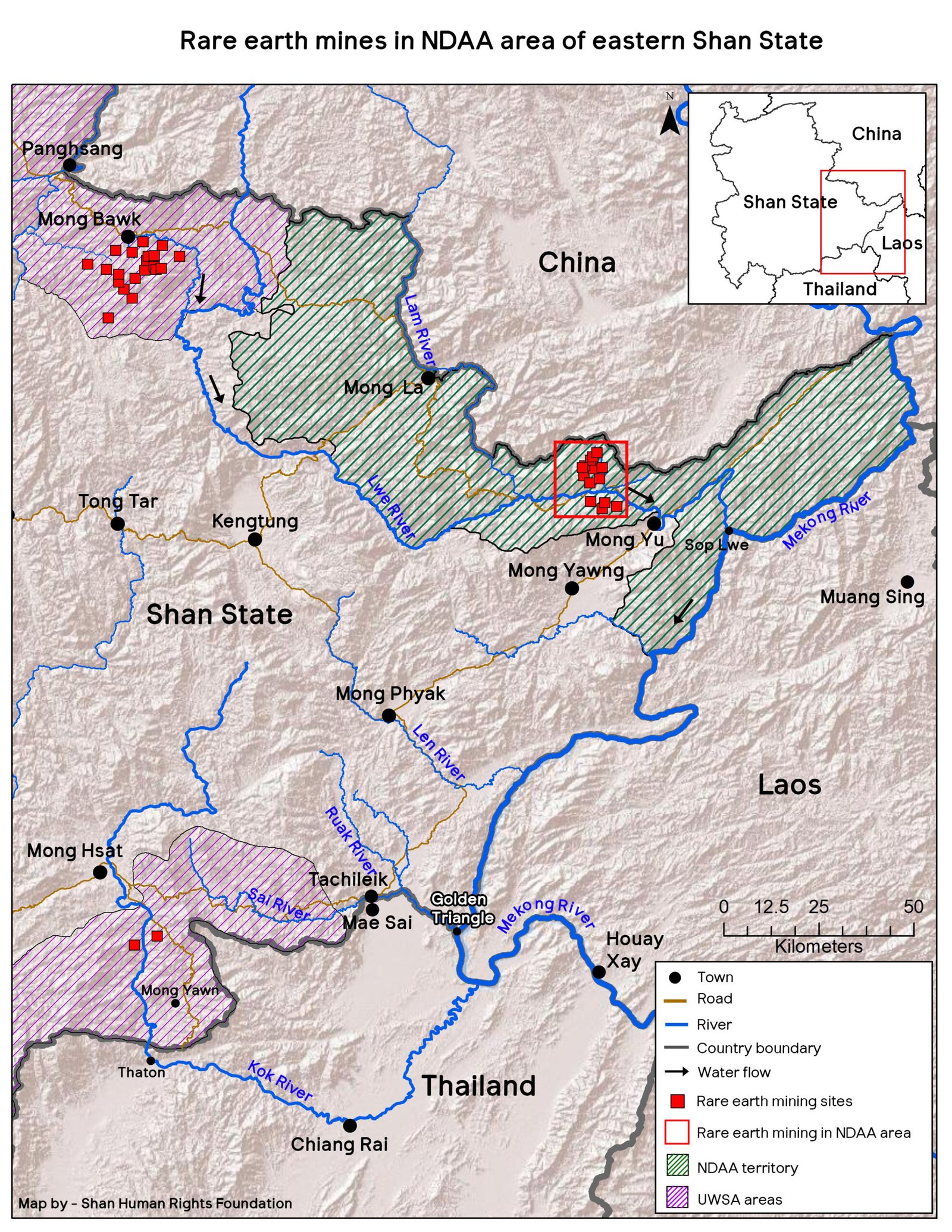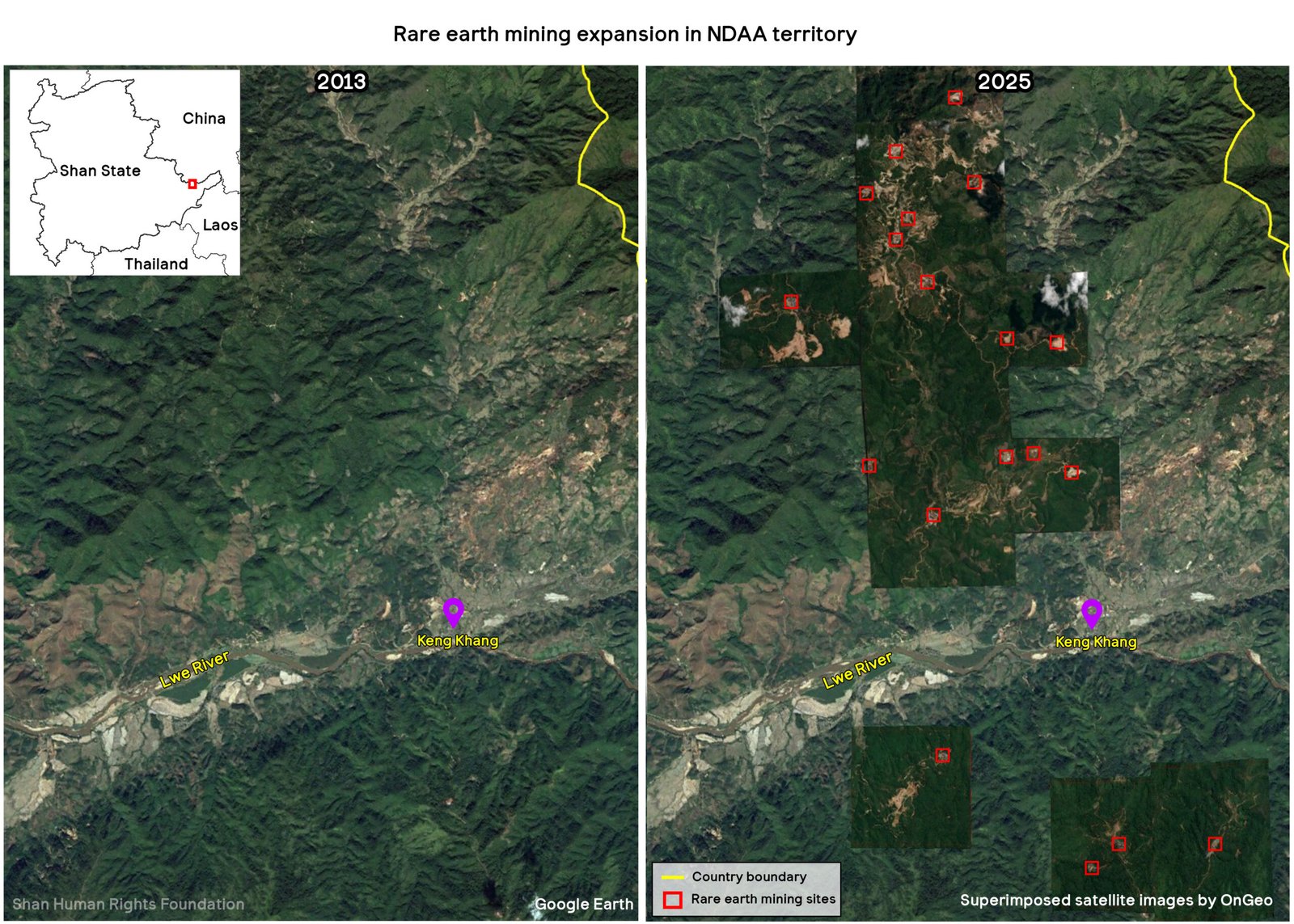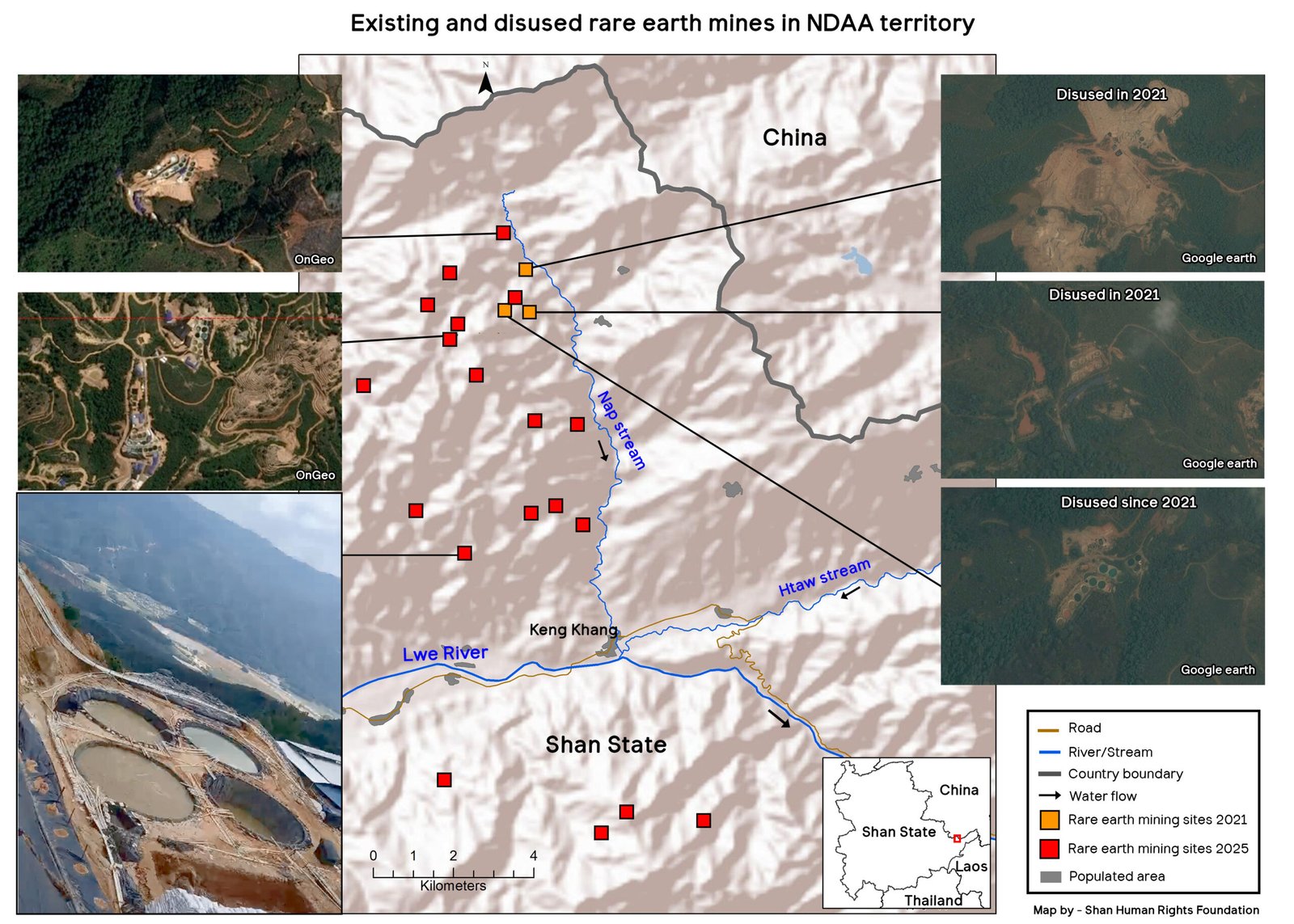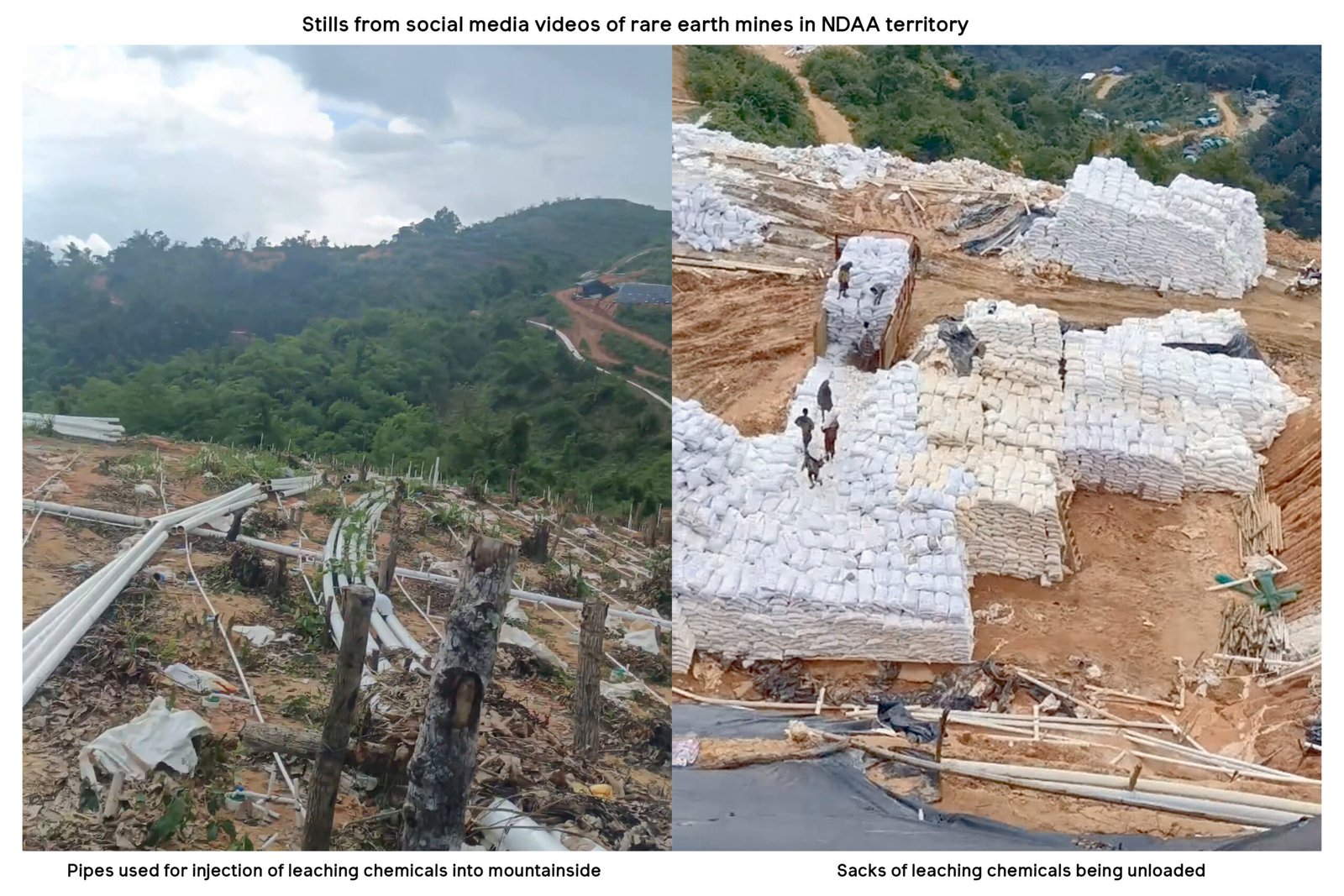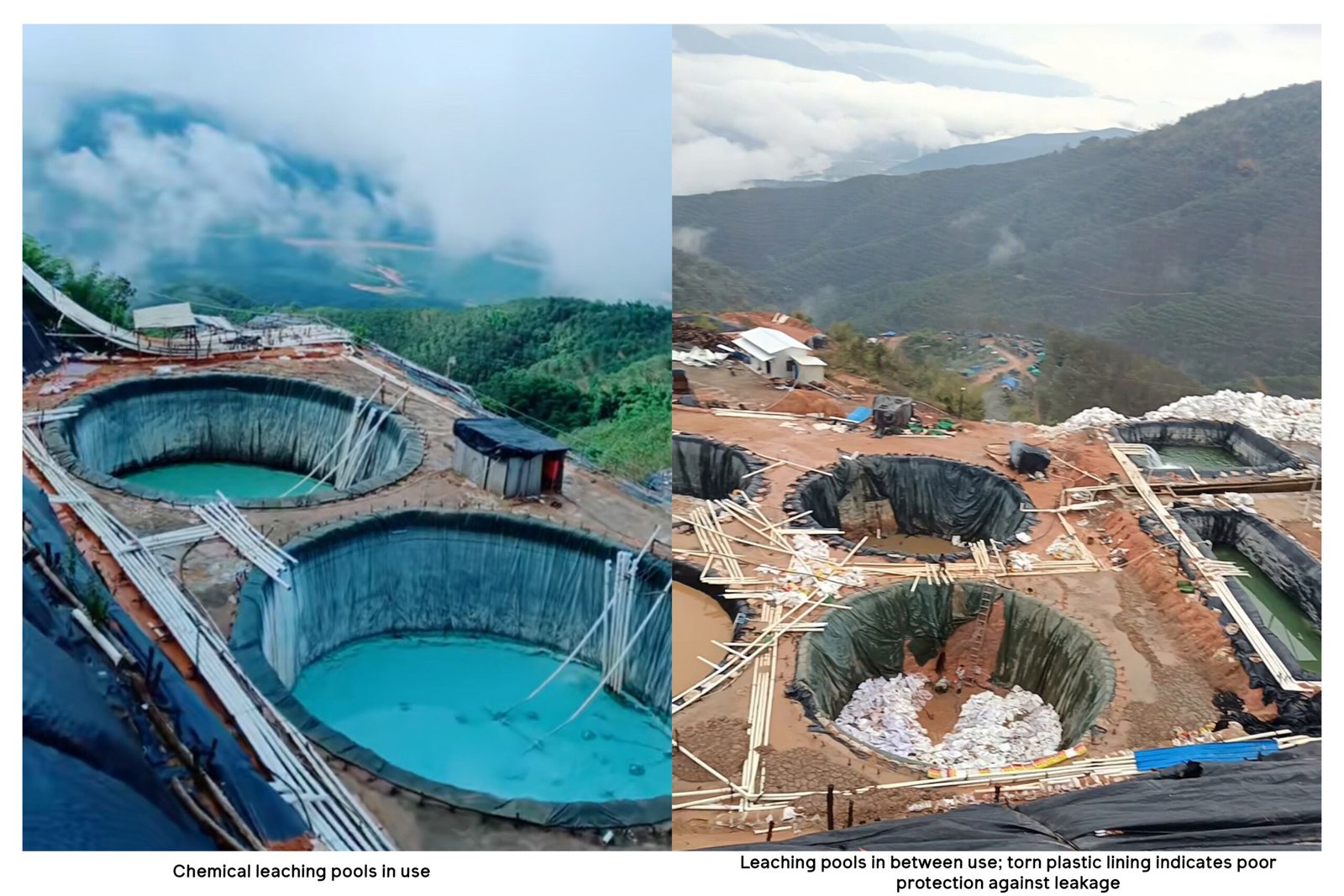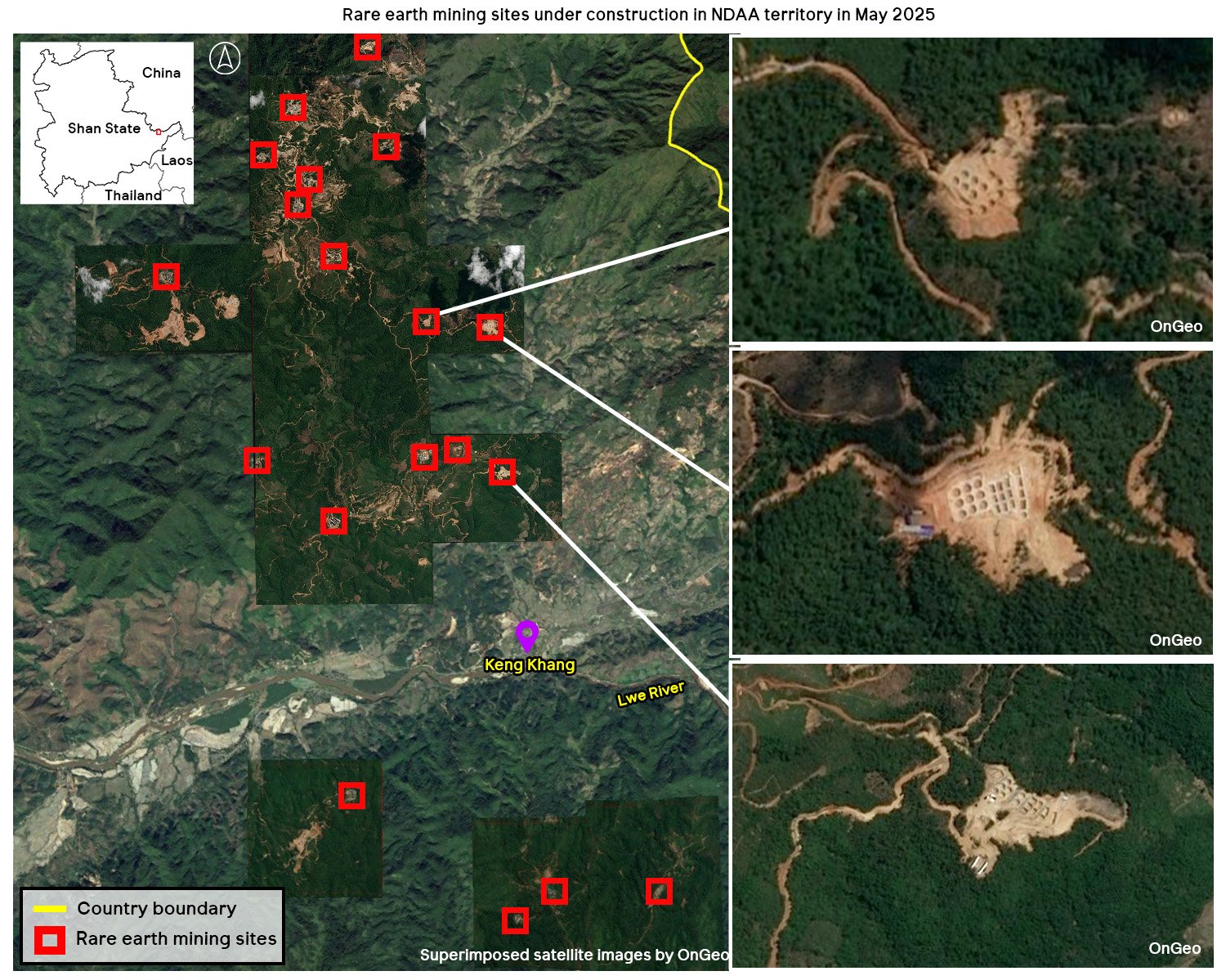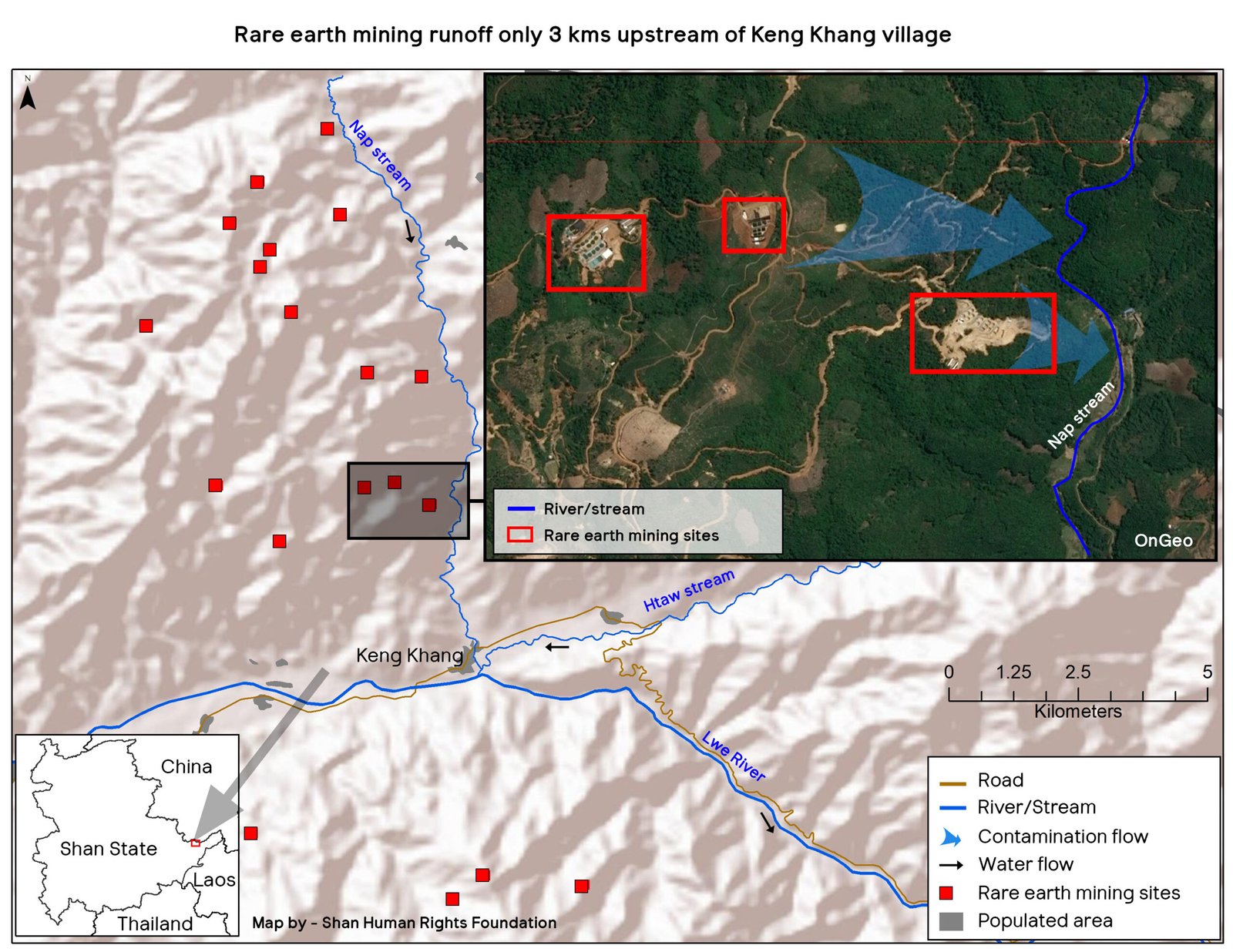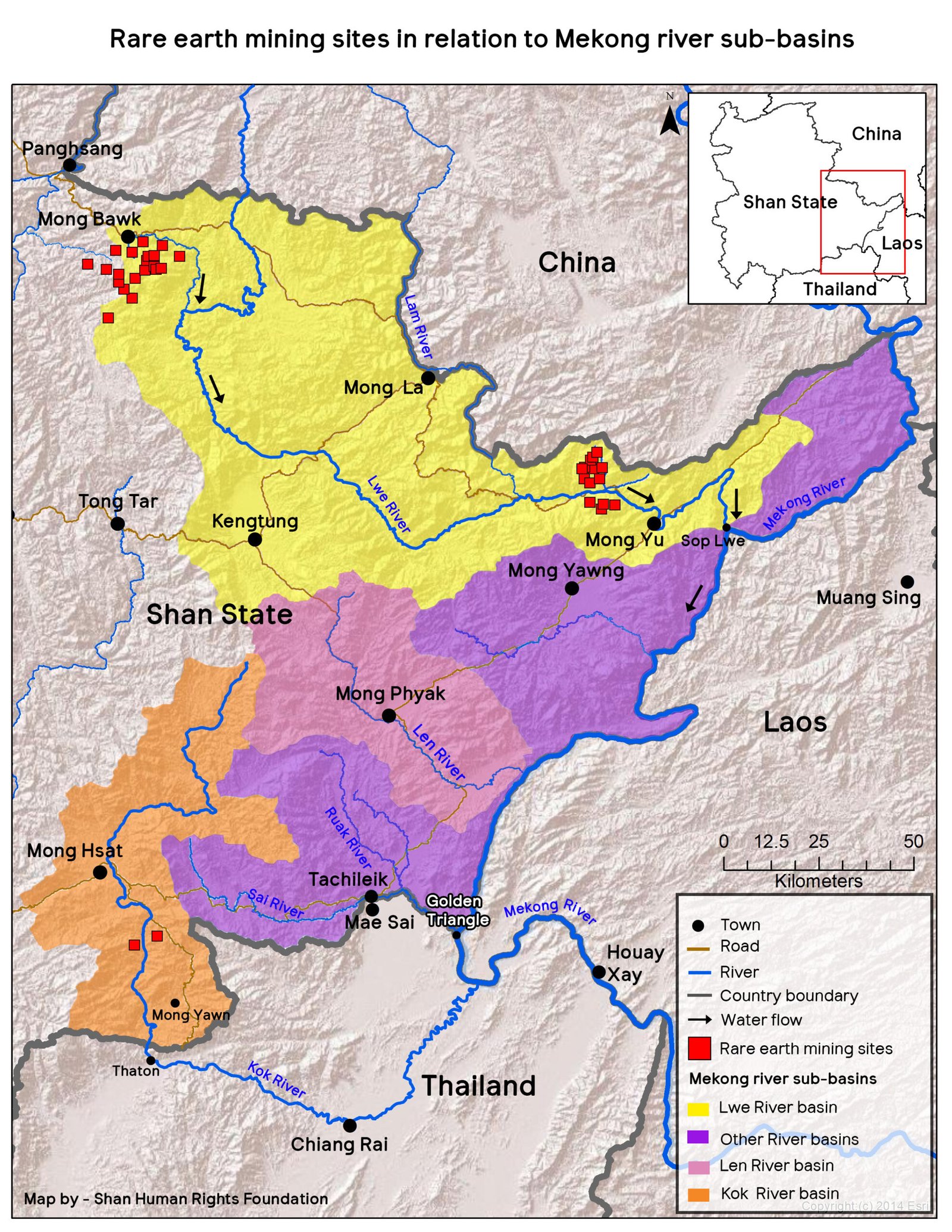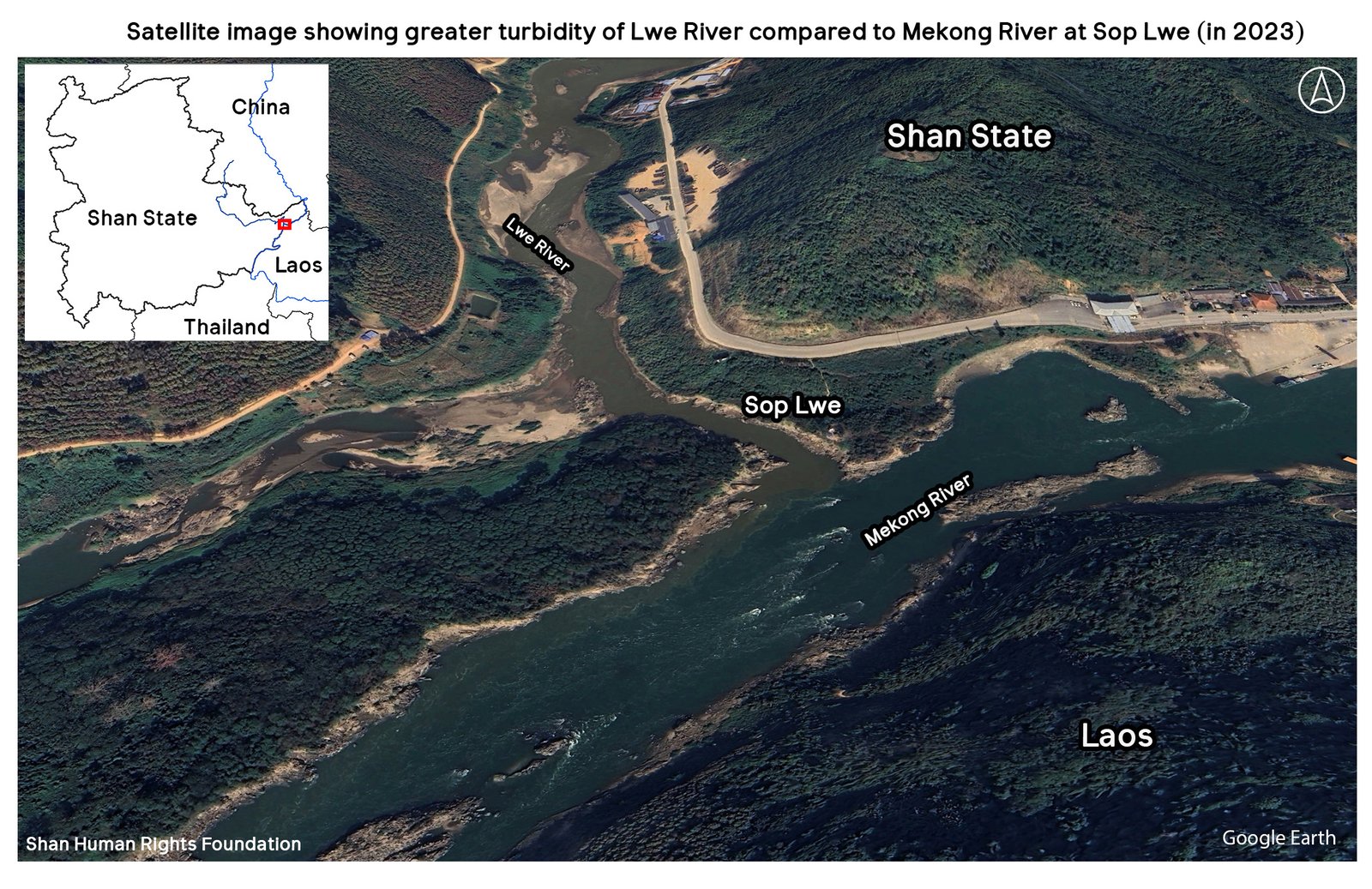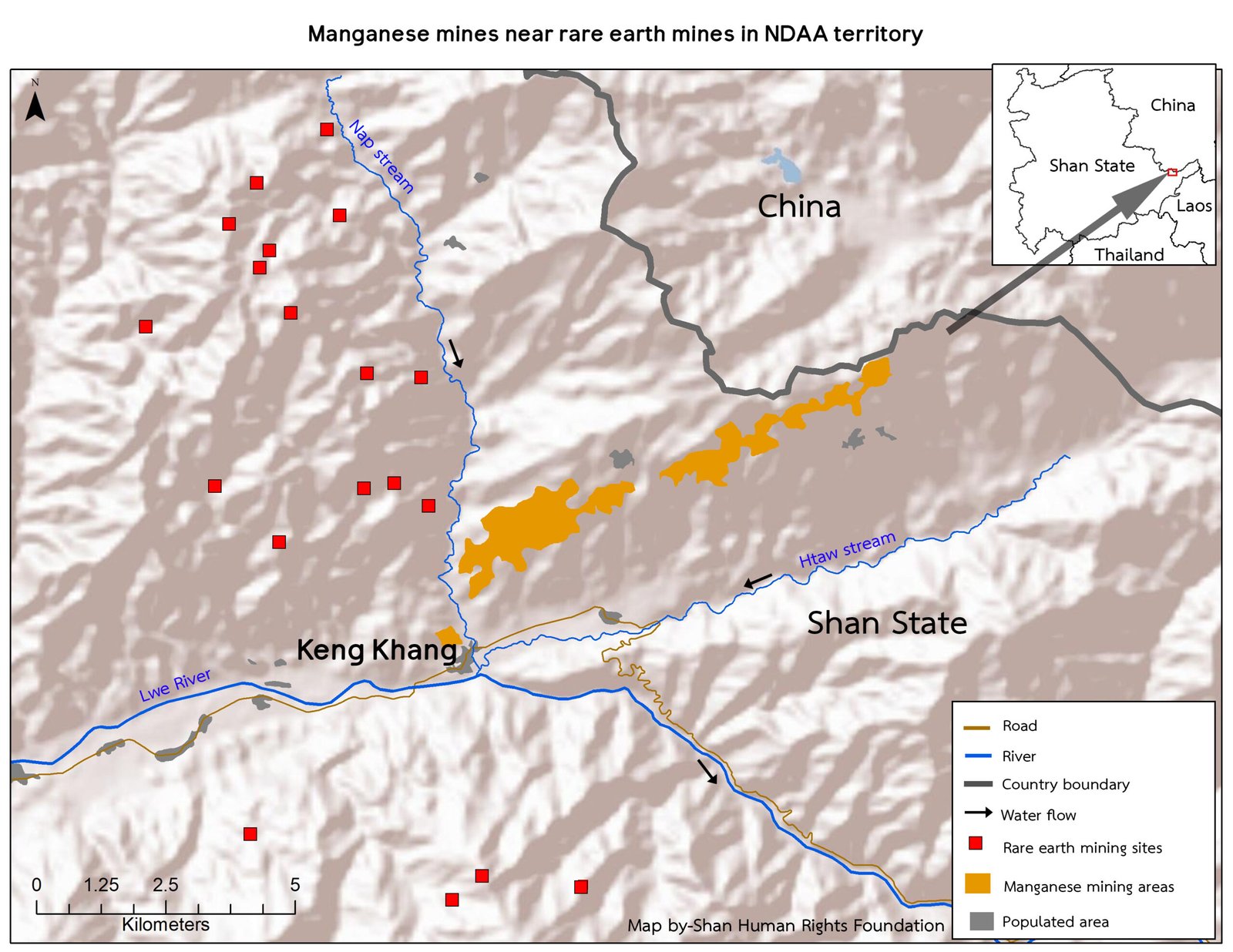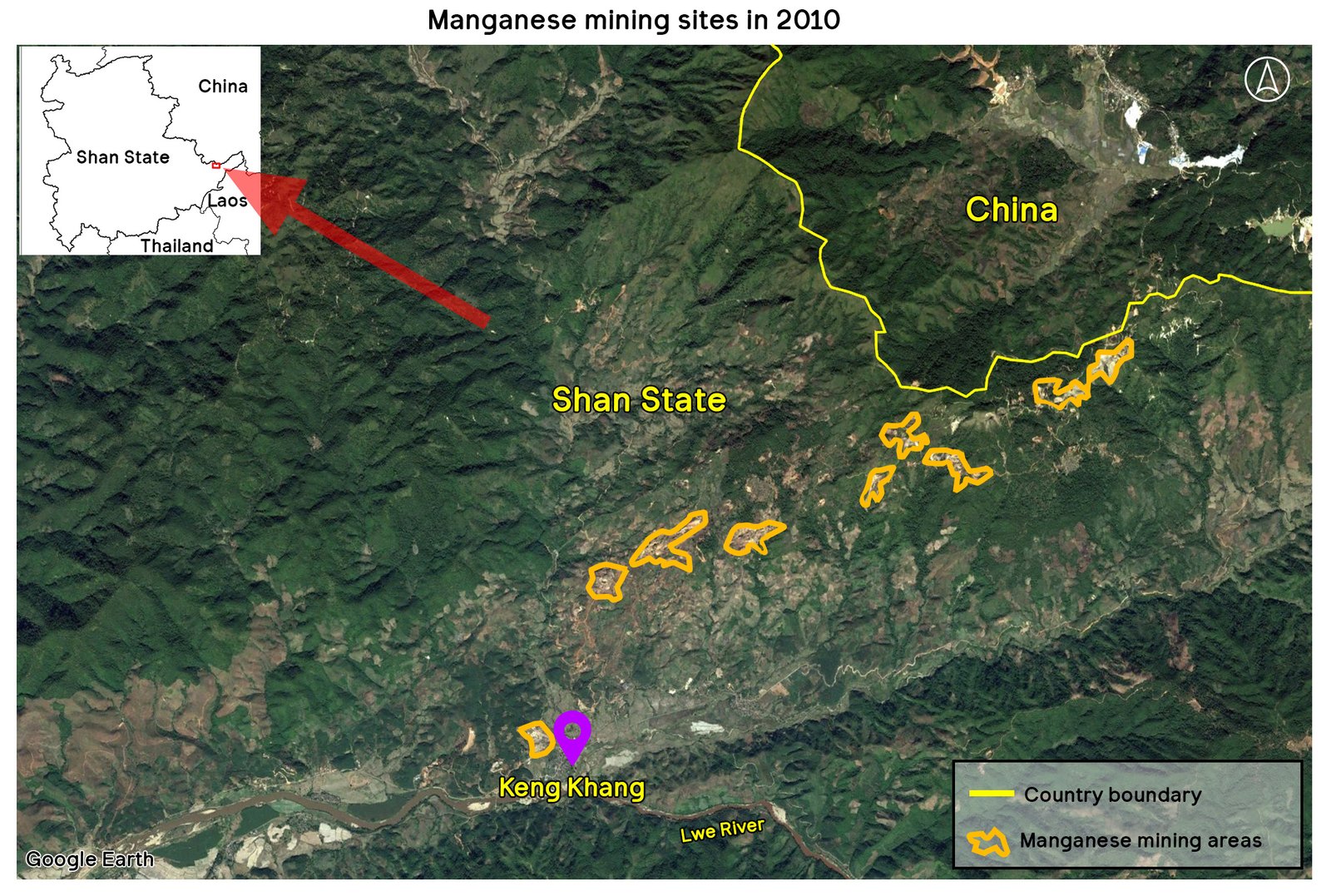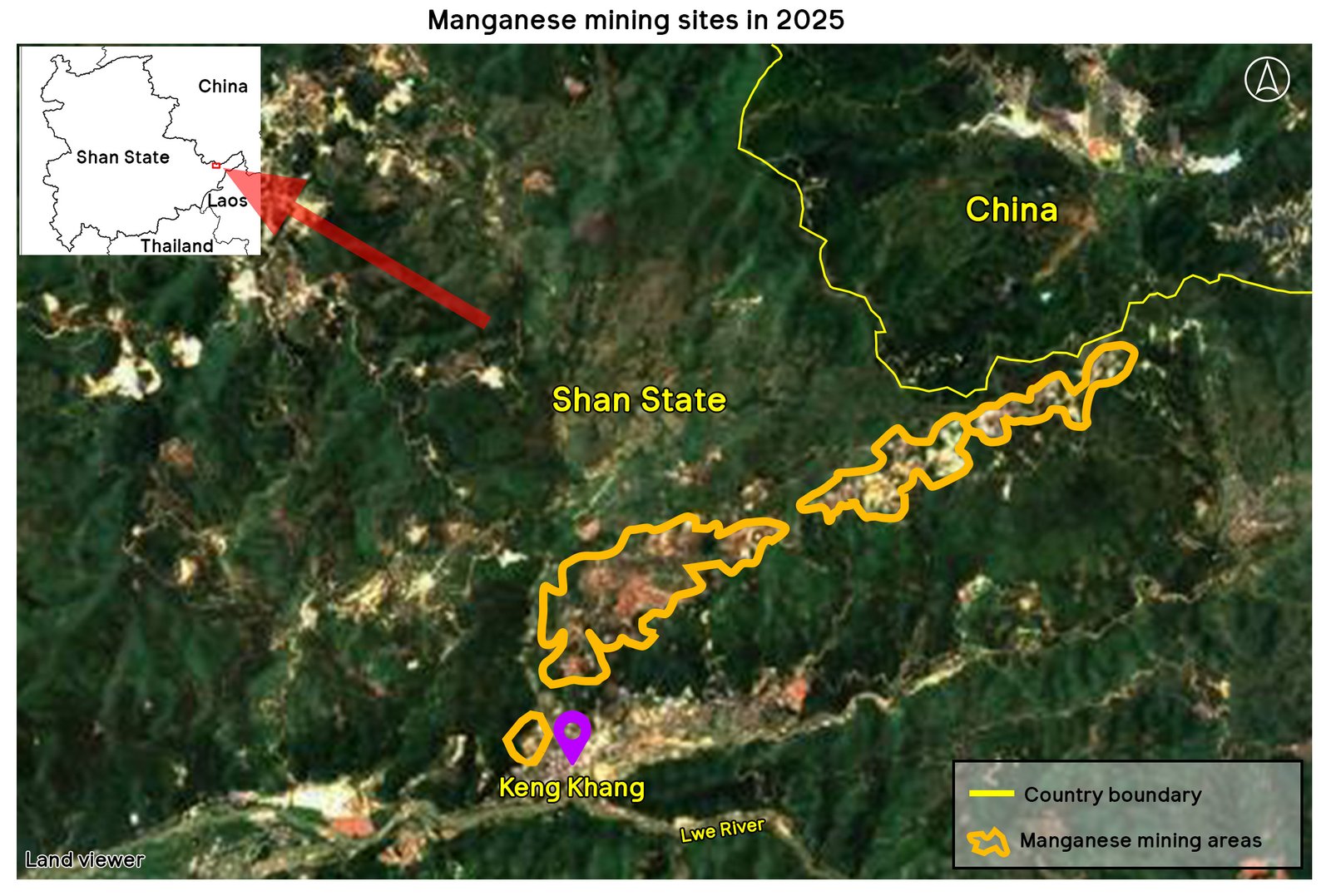August 25, 2025
Update: Satellite images and videos reveal 19 rare earth mines in NDAA-controlled area of eastern Shan State near Mekong River
Download PDF >>> Shan | Burmese | English | Thai
Satellite images from May 2025 and recent video footage reveal nineteen rare earth mining sites under the control of the National Democratic Alliance Army (NDAA or “Mong La” army) in Mong Yawng township, easternmost Shan State, less than 40 kilometers from the Mekong River.
Images from early 2021 show only three rare earth mines in the area, two already disused and one which has since fallen into disuse. These three mines are therefore not counted among the nineteen sites in 2025, showing an exponential increase in rare earth mining over the past four years.
The nineteen existing mining sites all have the same rows of circular processing pools as rare earth mining sites in Kachin State, showing that in-situ leaching is being used to extract the rare earths. Videos posted on social media by workers from the NDAA sites also show the same in-situ leaching methods and equipment, including thousands of sacks containing leaching chemicals, and hillsides covered with pipes for chemical injection.
Sixteen of the existing mines are in operation, as seen by the filled processing pools, while three were still being developed in May, but already identifiable from the rows of circular pools under construction.
Most of the mines are located in a high mountainous area (4,000-5,000 feet above sea level) about four kilometers from the Chinese border. Water from this area drains into the Nap stream, which flows southward into the Lwe River, a Mekong tributary. Only four of the mines are located in the mountains south of the Lwe River, with water draining northwards from the mining area into the Lwe.
The Lwe River joins the Mekong River at Sob Lwe, opposite Luangnamtha province of Laos, about 125 kms northeast of the Golden Triangle river junction where the borders of Laos, Burma and Thailand meet.
The rare earth mines all lie within Special Region 4 territory, controlled by the NDAA since signing a ceasefire with the Burmese military regime in 1989.
Apart from rare earth, other kinds of mining are also taking place along the Lwe River, and contributing to water contamination. The rare earth mines lie only a few kilometers west of a strip of manganese mines stretching for eight kilometers along a ridge of hills forming the border with China. Already in 2006, the Lahu National Development Organisation (LNDO) exposed how manganese mining in this area, carried out by over 1,000 Chinese mine workers, was harming the environment and health of two nearby hill villages, inhabited by indigenous En and Loila peoples. Over the past 20 years, the manganese mining has expanded dramatically, with runoff draining southward into the Lwe River.
On August 7, 2025, the Burmese military regime-appointed Shan State Minister Aung Aung and the regime’s Triangle Regional Commander Major-General Soe Hlaing visited Mong La town, the NDAA capital which is a key border trade gateway into China, and met NDAA leaders there. Details of the discussions were not publicly disclosed. The previous day, on August 6, the same regime delegation met with United Wa State Army (UWSA) leaders at Mong Bawk and Panghsang in the northern UWSA territory.
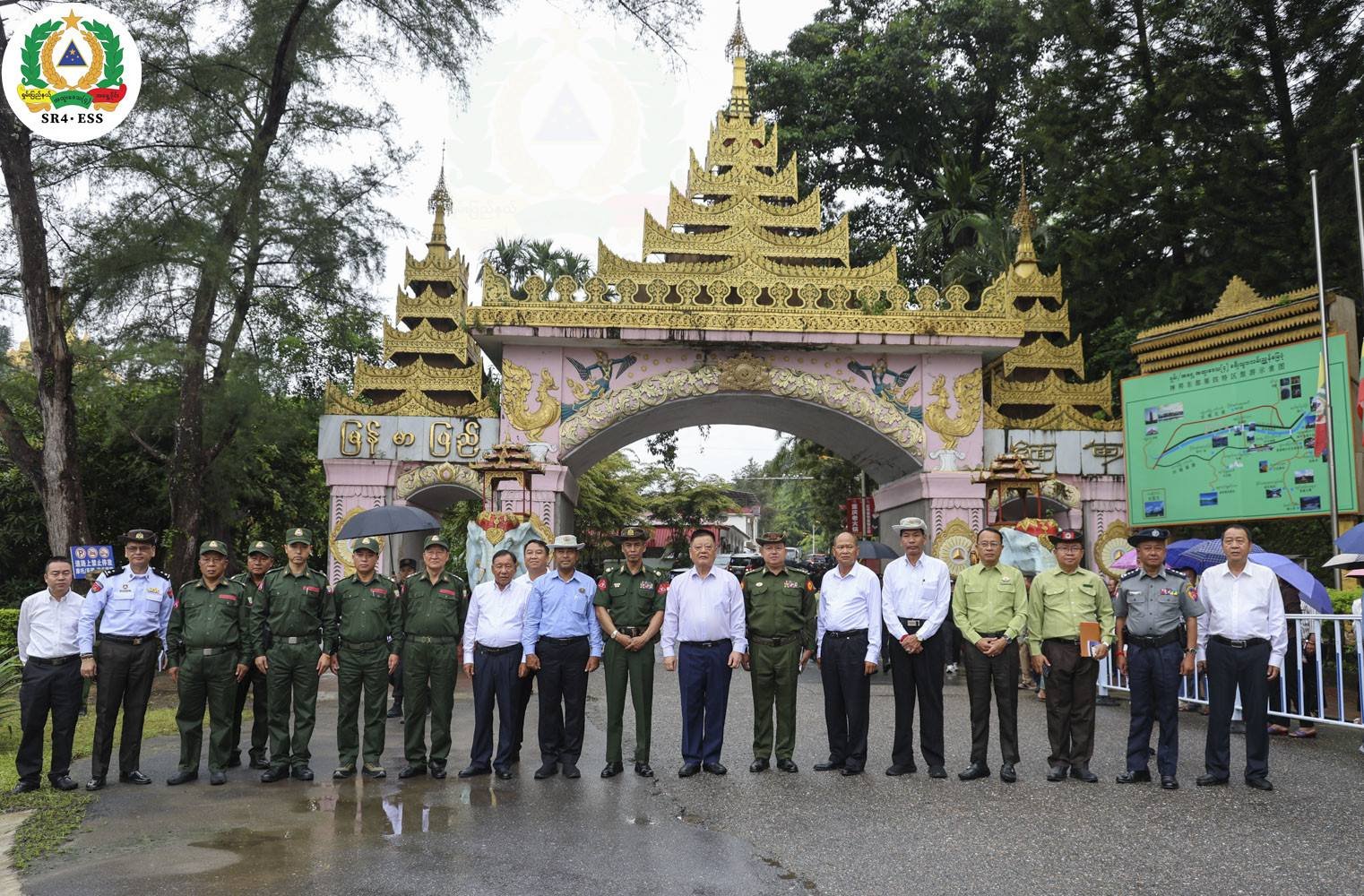
Contacts:
Ying Leng Harn +1 825 425 4099 Signal (Burmese)
Ying Hom +44 7418 602 464 Signal (Thai)
Sai Hark Jet +1 343 304 5332 Signal (English, Shan)


